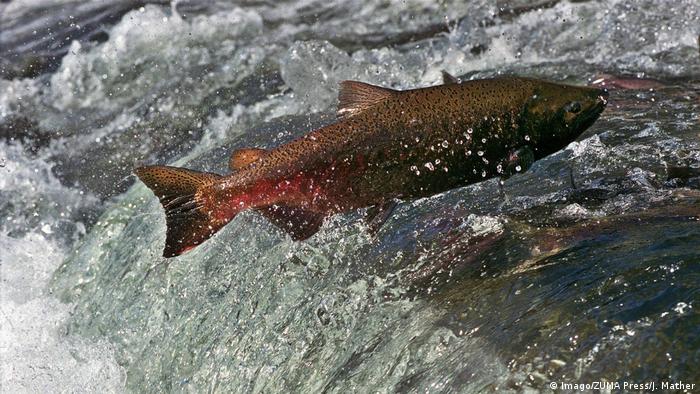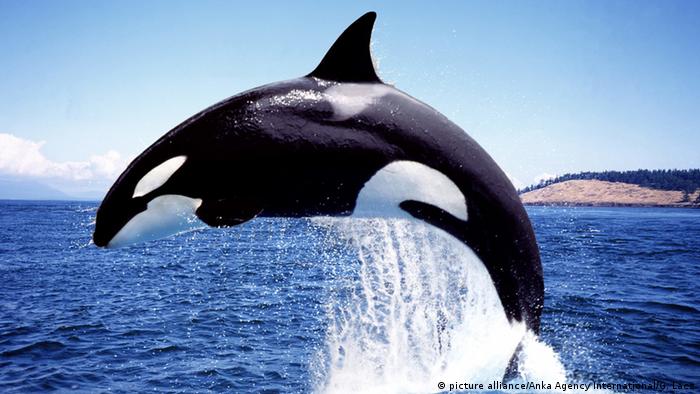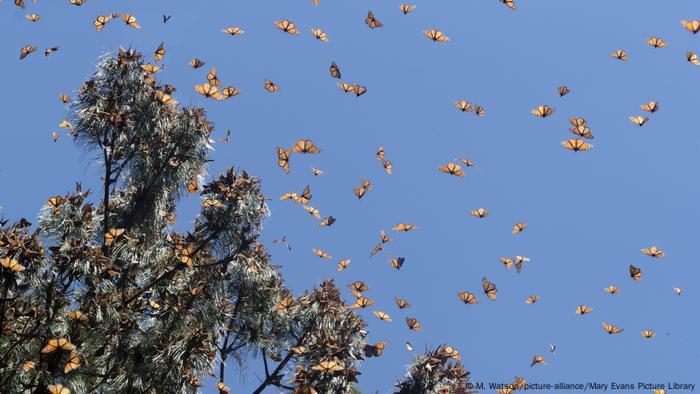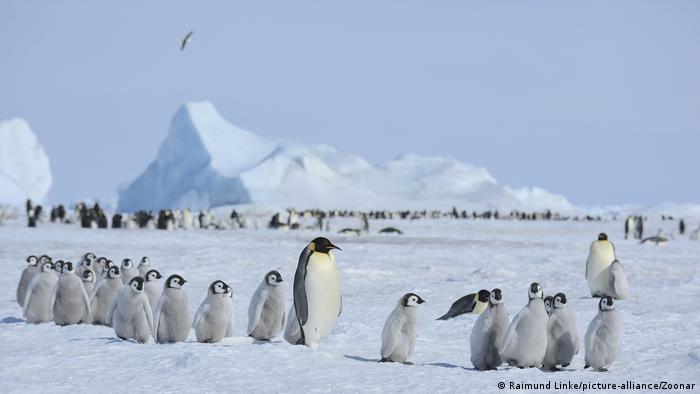The Worldwide Union for Conservation of Nature (IUCN) has included the migratory monarch butterfly on its Purple Checklist of Threatened Species and categorized it as “endangered.”
The designation is 2 steps decrease than extinction.
“It is only a devastating decline,” mentioned Stuart Pimm, an ecologist at Duke College who was not concerned within the new itemizing. “This is likely one of the most recognizable butterflies on the planet.”
The beloved butterfly is thought for its iconic orange and black sample and its spectacular annual journey of as much as 4,000 kilometers (2,485 miles) throughout the Americas — the longest migration of any insect species recognized to science.
In response to the IUCN, the inhabitants of monarch butterflies in North America has declined between 22% and 72% over the past 10 years.
Scientists estimate that the inhabitants has shrunk by 85% because the Nineties, when the species was numbering within the tens of millions.
The IUCN, nevertheless, didn’t record nonmigratory monarch butterflies in Central and South America.
-
The unimaginable journeys of migratory animals
Pole to pole
It is not uncommon for animals emigrate to keep away from harsh winters, however the sun-seeking Arctic tern takes this technique to extremes. The small seabird flies between the Arctic and Antarctic to absorb two summers every year and extra daylight than another animal. Making a spherical journey of 35,000 kilometers (21,748 miles), the tern breaks all data for migratory distances traveled.
-
The unimaginable journeys of migratory animals
Uphill battle
If the tern takes prize for distance, the salmon certainly deserves particular commendation for effort. Hatching in rivers, they swim downstream to spend most of their lives at sea. However the laborious work comes as they battle towards the present and leap up waterfalls to make it dwelling. If this wasn’t battle sufficient, hungry bears, eagles and folks lie in anticipate the exhausted fish as they close to their purpose.
-
The unimaginable journeys of migratory animals
Midnight wanderers
By day, straw coloured fruit bats dangle from Africa’s metropolis timber like assemblages of damaged umbrellas. However at twilight, they take gracefully to the air, touring as much as 180 kilometers earlier than daybreak and dispersing seeds and pollen as they feed. They span even higher distances by season, and in colossal numbers. Every fall, round 10 million of those “megabats” arrive in Zambia’s Kasanka Nationwide Park.
-
The unimaginable journeys of migratory animals
Spa break
Many whales hunt in polar areas however can journey 18,000 kilometers every year to take pleasure in hotter waters. Scientists had assumed they like to present start within the tropics. However new analysis suggests they may be migrating for the sake of their pores and skin. Whales must molt, and in icy waters the place their blood provide is drawn away from the pores and skin, lifeless cells construct up and put them susceptible to an infection.
-
The unimaginable journeys of migratory animals
Royal tour
It is laborious to think about a creature as tiny and fragile as a butterfly endeavor epic migratory journeys. And but, browsing air currents, the monarch butterfly can journey as much as 3,000 kilometers. In summer time, they’re at dwelling in northern areas of the US, however when temperatures fall, they head south to California or Mexico to overwinter. Roosting collectively in giant numbers helps them maintain heat all yr.
-
The unimaginable journeys of migratory animals
Third eye
Leatherback turtles journey as much as 10,000 kilometers, from Canada to the Caribbean and Alaska to Indonesia. Nobody is aware of how they discover their approach from feeding grounds wealthy of their favourite meals like jellyfish to the seashores the place they breed. However scientists consider a spot on prime of the animal’s head might enable gentle to achieve its pineal gland, triggering its journey on the proper second of the yr.
-
The unimaginable journeys of migratory animals
Following the herd
The mass motion of wildebeest throughout the African plains is maybe the planet’s biggest migration spectacle. With no actual starting or finish, their round route takes 1.5 million wildebeest, and variety of zebras, gazelles and different grazers, via the Serengeti-Mara — crossing crocodile-infested rivers and dodging lions and packs of painted wolves —- looking for recent meals and water.
-
The unimaginable journeys of migratory animals
Gradual meals
Well-known for his or her parental devotion, emperor penguins lay their eggs 100 kilometers from the Antarctic ocean the place they feed. Mom and father should take turns to journey throughout the ice, refill on fish, and make the lengthy shuffle again to regurgitate it for his or her younger. Their accomplice, in the meantime, goes hungry for weeks to defend the chick from chilly that might in any other case kill it in minutes.
Writer: Ruby Russell
Why is the migratory monarch butterfly endangered?
Scientists attribute the decline of the migratory monarch butterfly inhabitants to a number of causes, one being the destruction of substantial areas of their winter shelter resulting from logging and deforestation.
Milkweed, the host plant that their larvae feed on, has additionally been affected by pesticides and herbicides utilized in intensive agriculture.
One other risk is local weather change, with drought, wildfires and excessive temperatures having a big affect.
Thousands and thousands of monarch butterflies migrate throughout the Americas. They spend winter within the mountains of central Mexico or coastal California earlier than they migrate to southern Canada. They breed a number of generations alongside the way in which.
“It’s tough to look at monarch butterflies and their extraordinary migration teeter on the sting of collapse, however there are indicators of hope,” mentioned Anna Walker, who led the evaluation of monarchs.
“From planting native milkweed and decreasing pesticide use to supporting the safety of overwintering websites and contributing to neighborhood science, all of us have a task to play in ensuring this iconic insect makes a full restoration.”
Excellent news: Extra tigers
Whereas the migratory monarch butterfly inhabitants shrinks, scientists now consider the variety of wild tigers is greater than beforehand estimated.
In accordance the IUCN, there are regarded as between 3,726 and 5,578 wild tigers — 40 p.c greater than on the final evaluation in 2015.
The conservationist group mentioned the rise in numbers is essentially due to improved monitoring. The tiger inhabitants can also be believed to be steady or growing.
Habitat safety tasks confirmed that “restoration is feasible,” the IUCN mentioned.
fb/dj (AFP, AP, Reuters)












